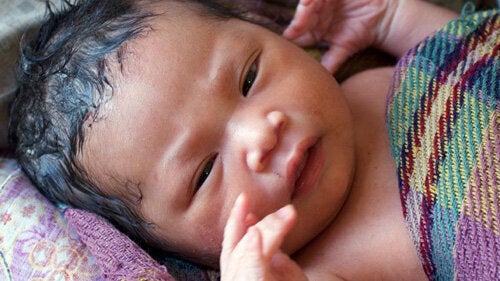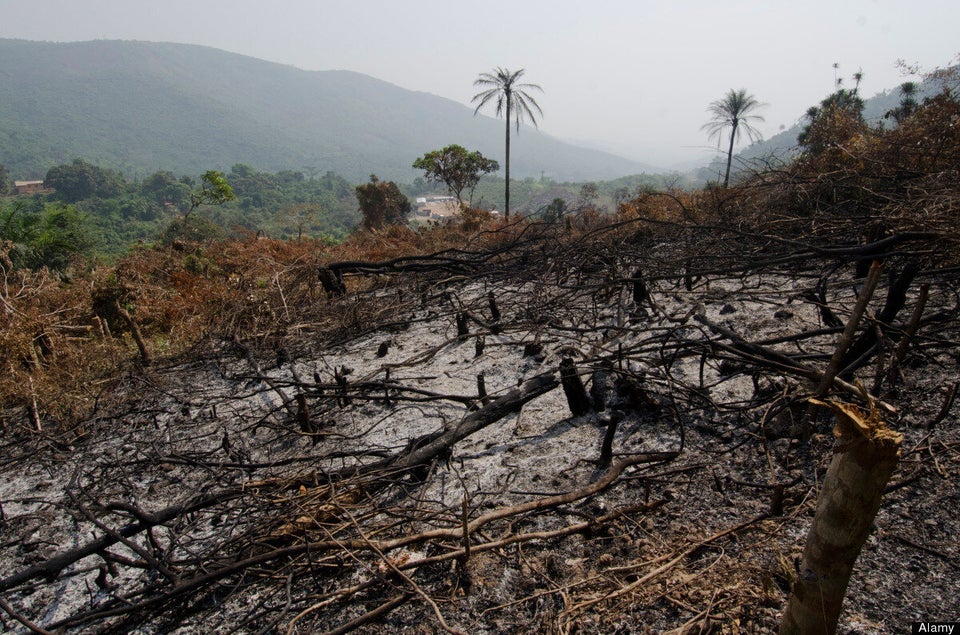
Apart from those in the medical profession, there can't be many men in the world who saw as many babies being born this year as I did. It all started when I was invited to make one of the films for Why Poverty?, a global initiative posing important questions about poverty and inequality.
I wanted to start at the beginning -- at the birth of a child -- to see how poverty might impact on the life of an infant and how we might then imagine how that life would turn out. Once you decide to start there, you are necessarily involved in questions of infant mortality, at the chances a child has of survival. And infant mortality goes hand in hand with maternal mortality. You can't talk about one without the other.
I decided early on that there was no point in trying to make a subtle film. The fact is that women and children who are poor die in greater numbers from preventable causes than those who are not poor. Poverty kills people.
I decided to film Welcome to the World in three different countries: Sierra Leone, Cambodia and the USA. Sierra Leone has one of the highest infant and maternal mortality rates in the world. Cambodia also fares badly, but is improving. The United States, despite being the richest country on Earth, has one of the worst infant mortality rates in the developed world.
Sierra Leone, our first location, is a beautiful country with abundant natural resources and -- to my eye at least -- an energetic and resourceful population. So why do babies and mothers die here in such huge numbers?

The answer is simple. It's not because African women are more susceptible to birth complications than other women, nor is it because they are inherently more unhealthy. It's simply because of a lack of resources. Giving birth can be a tricky business. A woman in Sweden, for example, goes in good time to a hospital with the resources to deal with complications. Women in Sierra Leone don't have that option because there are very few hospitals equipped to deal with obstructed labour, pre-eclampsia, ruptured uterus, breech babies or any of the other difficulties that can arise in pregnancy and childbirth.
The women in the Gondama region in the south of the country are fortunate to have a hospital funded and run by Doctors Without Borders. The hospital deals only in emergency childbirth cases and has expert obstetricians who spend their days saving lives. Yet lives are still lost at a rate that would be unacceptable in the developed world. In the time our crew was there, I saw stillborn babies every day, most of whom would have survived if their mothers had arrived at the hospital sooner. As one doctor told me, "What we do here is not complicated or expensive, the procedures are relatively easy."
I felt grief and anger seeing dead babies being taken by caesarian section from the womb of their mothers. It's even more terrible when you know that poverty is the cause. But I had to keep those personal feelings out of the film. My job is to show what's happening -- sometimes in vivid detail -- and let viewers come to their own conclusions.
In Cambodia, I met Neang, a 36-year-old, pregnant mother of two, living in a slum on the edge of Phnom Penh with her 12-year-old son, Pisey, and her five-year-old daughter, Chamran. Neang is HIV positive, infected by a husband who also used to beat her. She left him when she became pregnant and now lives in a shack without water or power. The family relies on Pisey, who earns money by scavenging for re-sellable plastic and tin in rubbish dumps.
The story of Neang and her family is utterly depressing in many ways, but it's also hopeful. She has an indomitable spirit and is a good mother. She also has Pisey -- the most remarkable youngster I've ever met. He's fiercely determined to ensure his sister goes to school, even if he himself can't go because of the need to scavenge for money. Put this boy in different circumstances, give him an education and feed him, and he'd change the world.
Half a world away in San Francisco is Starr, another 36-year-old pregnant mother living with her partner and two kids in a homeless shelter. They lost everything in the recession and are currently living on welfare. They are a living reminder that poverty can be found anywhere, even in wealthy California. Starr delivered her baby safely in the San Francisco General Hospital. Baby Luma has a loving family but she is disadvantaged right from the start by being born into poverty and homelessness.
Making this film vividly brought home the fact that we shouldn't accept poverty as an inescapable and fixed fact of life. There is enough money to go around and there are enough resources to ensure that every woman gives birth in a safe and clean environment, attended by skilled health professionals.
If the film makes viewers angry about the state of the world, that would be just great by me.
Welcome to the World airs Monday December 3rd, at 10 pm on TVO, and can be streamed at tvo.org/whypoverty following the broadcast.
